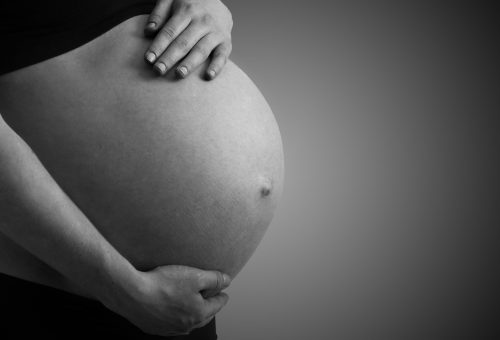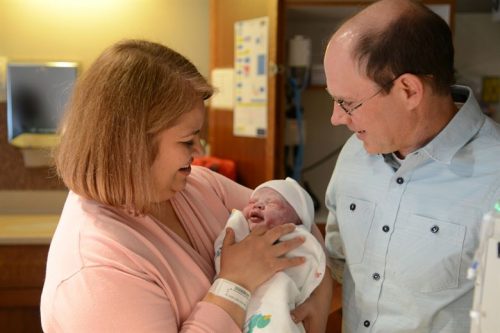
Pregnancy is special and often overwhelming for women who are diagnosed with existing heart disease. One crucial event that occurs during pregnancy is an increase in the work of the heart, which means that the heart must work double time. This becomes a dilemma for the expectant mom with heart disease. “With the presence of CVD [Cardiovascular Disease] in pregnant women posing a difficult clinical scenario in which the responsibility of the treating physician extends to the unborn fetus.”, Tamam N Mohamad, MD explains. She must also work hard and find ways to be able to provide sufficient effort to prevent further complications. Ultimately, pregnancy is a sensitive issue and something that needs much thought for the expectant mother and her family as well. As per statistics, congenital heart conditions compose nearly 50% of heart disease cases in pregnant moms. Although management for this condition has tremendously improved through the years, heart disease remains to be among the leading causes of maternal death all over the world. Categories Of Heart Disease There are different kinds of heart disease, which can be classified depending on the risk they have on women during pregnancy. Category 1. Low Risk
- Ventricular septal defect – there is an existing hole in between the two ventricles of the heart.
- Atrial septal defect – a hole exists between the two upper chambers of the heart or the atria.
- Tricuspid disease – the thinning of the right atrial and right ventricular flaps of the heart
- Patent ductus arteriosus – a vital structure of the heart did not properly close after birth
- Tetrology of Fallot – the presence of a hole between the two ventricles of the heart. Additionally, there is an existing obstruction between the right ventricle and the lungs. The right ventricle is thickened.
- Mitral stenosis – category 1 mitral stenosis is a mild to moderate thinning of the valve between the left ventricle and left atrium of the heart.
Category 2. Moderate Risk
- Mitral stenosis group 3 or 4 – described as a more severe constriction of the valve between the left ventricle and the left atrium of the heart.
- Tetralogy of Fallot, uncorrected – the type that was not corrected by surgery before pregnancy.
- Aortic stenosis – a constriction of the valve that leads from the left ventricle through the aorta.
- Previous heart attack
- Marfan syndrome – a condition affecting the blood vessels of the heart, eye, lungs, and skeleton.
Category 3. High Risk
- Aortic coarctation with involvement of the aortic valve
- Marfan syndrome with involvement of the aortic valve
- Pulmonary hypertension – increased arterial blood pressure that goes from the heart to the lungs.

Treatment Plan For The Pregnant Woman With Heart Disease Expectant mothers with existing heart disease don’t necessarily need to be monitored by the whole healthcare team that specializes in heart conditions in pregnancy, as some of these conditions can be treated with specific medications. For women who have had a prior heart valve replacement, they are usually required to take anticoagulants like heparin throughout the whole pregnancy. It is ceased only upon delivery, but to be continued shortly after. Warfarin, another anticoagulant, is not always recommended, as this is believed to be a teratogen. On the other hand, those with mitral stenosis require beta-blockers, as these medications function to decrease heart rate during anxiety or specific activities. Beta-blockers are also prescribed for women who have had a previous heart attack, along with calcium channel blockers and nitrates. Finally, if you are pregnant with a severe heart condition, you must cautiously consider the dangers and risks that you’ll possibly experience. You must also show complete cooperation with your doctor’s treatment plan for you. If you are still in the early part of your first trimester, you might want to ruminate on undergoing a therapeutic abortion. If, however, you decide to proceed with it, you may be required to be hospitalized and eventually placed on bed rest to protect you and your baby.
Labor And Delivery Among Women With Heart Conditions Generally, pregnant mothers who are diagnosed with mild heart disease can try to have a normal delivery, except if there are complications that force them to deliver through caesarian section. The normal delivery, where the baby exits vaginally, mostly produces better results, although the woman feels more pain compared to when she chooses the C-section. Women who require a C-section, though, experience the pain after the delivery, when the anesthesia wears out. Thus, in both types of delivery, pregnant women experience pain but just not in different instances. This is why during childbirth, doctors recommend that women take pain relief medications, either orally or intravenously. Likewise, expectant mothers with severe heart conditions can also attempt to deliver normally, if their primary physician gives it a go. Women who are very sick or have severe anxiety or depression do not take surgical procedures very well. “Management of pregnancy and delivery should be planned accordingly on individual bases.” Titia P.E.Ruys, MD and co-authors say.
Effects Of Maternal Heart Conditions On The Baby

The first and most crucial information regarding expectant mothers with heart disease is that the baby may easily inherit these conditions. The unborn baby’s status can often be monitored through a procedure known as a fetal echocardiogram. Also, these congenital heart diseases can be treated through surgical procedure after birth. According to Paraskevi Koutrolou-Sotiropoulou, MD and co-authors, “Pregnant women with underlying heart disease (HD) are at increased risk for adverse maternal and fetal outcomes.”
